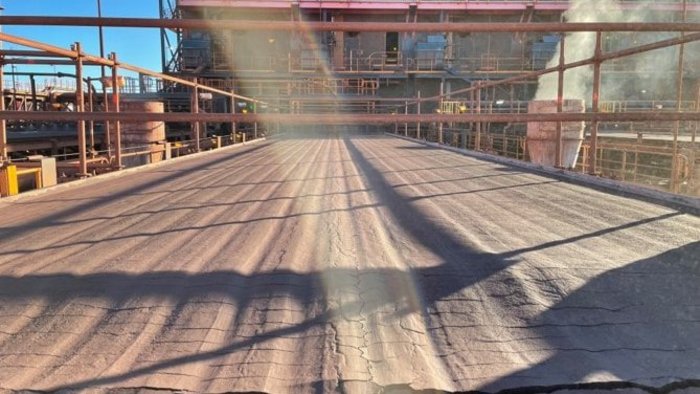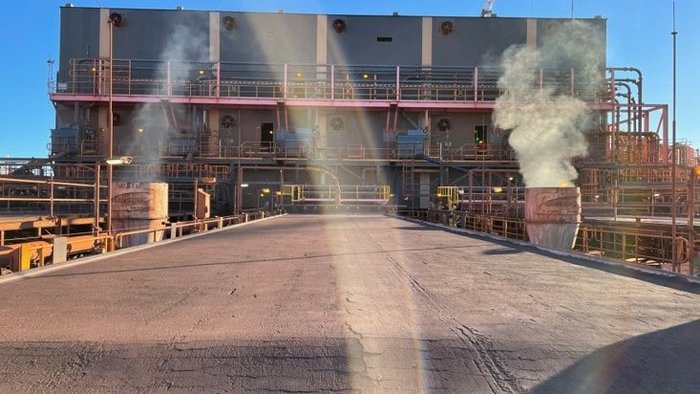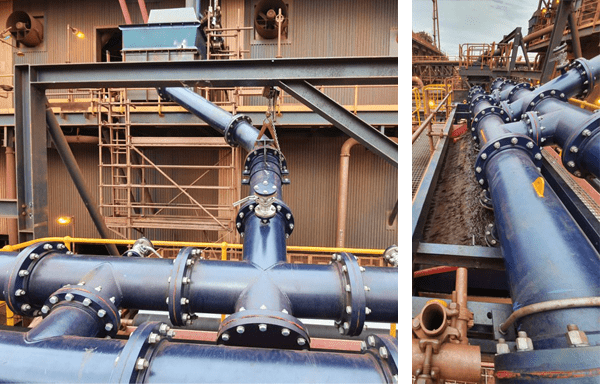Application of DELKOR’s belt feeder on existing belt filters at a major iron ore site in Australia has highlighted strong improvements in belt filter performance. This, together with DELKOR test work, has indicated the potential to significantly reduce the number or the size of the filter, which results in reduced capital, transportation, installation and operational costs, together with a reduction in spares and overall maintenance and equipment footprint.
After retrofitting DELKOR’s specialized IO belt feeders, known as MAX-FeED, onto five belt filters supplied by another OEM at the site in Australia, significant improvements were seen, both in throughput (66 % increase) and consistency of filter cake characteristics:
- Feed flow increased from 300 to 500 m3/h
- Cake thickness difference across the belt width reduced from more than 10 to within 5 mm
- Moisture content was consistent across the entire width of the belt
- Filter cake at the edges were dewatered to the same degree as the rest of the cake
The belt feeder performance was confirmed through extensive test work by DELKOR, which showed that a minimum filtration rate of 3,500 kg/m2/h can be achieved with a 134 m2 filter as against 2,500 kg/m2/h being achieved presently, while achieving a cake moisture target of 12 % and below. This equates to a 40 % increase in throughput, or the requirement for ten 134 m2 horizontal belt filters (HBFs) compared to the twelve required with competing technologies.
This significantly improved performance is a result of advanced features incorporated into the DELKOR MAX-FeED that overcome some of the challenges with existing feeders, including:
- Feeder design optimized for the process flow pattern and maximized slurry distribution across the belt width through 3D CFD modelling, which minimizes inconsistency in feed flow patterns and vacuum short circuiting
- The adjustable weir system, which provides a wider operational flow range and better handling of flow conditions, prevents fluctuation or surging of slurry flow
- The adjustable spigot nozzle and distribution screens, designed to handle larger throughput and scalability, overcome the limited throughput of conventional feeders
- The front and rear sloped feeding system also provides optimal feeder performance at high throughputs
Other features of MAX-FeED include the enhanced wear protection, particularly beneficial given the abrasive nature of iron ore, whilst consumable components, such as the spigot nozzle and screen, are also used in order to reduce maintenance downtime. In addition, the IO feeder is delivered in modules for easy and quick installation on site (within two days per feeder unit).
“DELKOR has continued to lead the field in innovative and high-performing liquid/solid separation technology, with the specialized IO belt feeder demonstrating exactly why DELKOR technology is the better choice,” says Raymond Leung, TAKRAF Australia Senior Manager Sales & Projects. “The improvement in belt filter performance that resulted from applying our MAX-FeED belt feeder technology on site is remarkable and highlights once again how our ongoing commitment to technology development is assisting our customers enhance the sustainability of their operations.”
For further information, please send us an e-mail at: info@takraf.com or download our flyer:
MAX-FeED - DELKOR’s specialized iron ore feeder
Innovation out of tradition – It pays to talk to a specialist!



